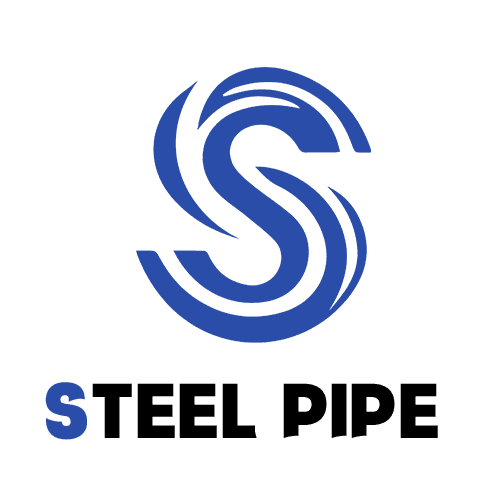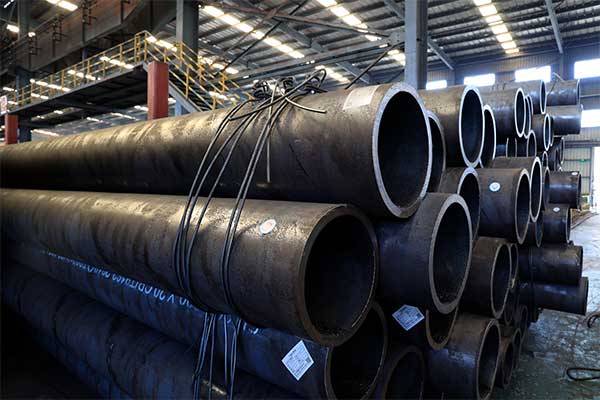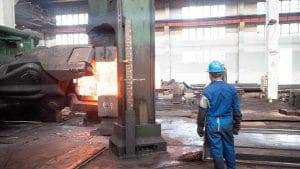Introduction
What is mechanical tubing? Mechanical tubing plays a critical role in various industries, providing essential support and functionality for a wide range of applications. This blog aims to provide a comprehensive understanding of what is mechanical tubing, exploring its characteristics, types, manufacturing processes, and uses. By delving into these aspects, we can better appreciate the importance of mechanical tubing in modern engineering and construction.
What is Mechanical Tubing?

Definition and Characteristics
Mechanical tubing is a type of tubing designed for mechanical and structural applications, as opposed to more common uses like fluid or gas conveyance. It is characterized by its precision, strength, and versatility. Mechanical tubing can be made from various materials, including carbon steel, stainless steel, and aluminum, depending on the specific requirements of the application.
Types of Mechanical Tubing
What is mechanical tubing? There are several types of mechanical tubing, each tailored to specific applications:
Cold-Drawn Seamless (CDS) Tubing: Known for its high strength and precise dimensions, CDS tubing is ideal for applications requiring tight tolerances and smooth surfaces.
Hot-Finished Seamless (HFS) Tubing: Typically used where dimensional tolerances and surface finish are less critical, HFS tubing offers good strength and is cost-effective.
Electric Resistance Welded (ERW) Tubing: Made by welding the seam, ERW tubing is commonly used in structural applications where high pressure and stress are not factors.
DOM (Drawn Over Mandrel) Tubing: Offers a combination of precision and strength, making it suitable for demanding mechanical applications.
Key Features
Mechanical tubing is prized for several key features:
- Strength: Capable of withstanding high stress and load conditions.
- Precision: Manufactured to tight tolerances for exact dimensions.
- Versatility: Suitable for a wide range of applications and environments.
- Durability: Resistant to wear, corrosion, and impact.
Manufacturing Processes
Cold Drawing Process
The cold drawing process involves pulling the tube through a die to reduce its diameter and improve its surface finish. This process increases the strength and hardness of the tubing, making it suitable for high-stress applications.
Hot Finishing Process
Hot finishing involves heating the material to a high temperature and then shaping it into the desired dimensions. This process is less precise than cold drawing but is more cost-effective for larger diameter tubes.
Electric Resistance Welding
Electric resistance welding (ERW) joins the edges of the tube using electrical resistance, creating a welded seam. This process is efficient and cost-effective, making it popular for structural tubing applications.
Drawn Over Mandrel (DOM) Process
The DOM process involves cold drawing the ERW tube over a mandrel, resulting in improved dimensional accuracy and surface finish. This method combines the benefits of both ERW and cold drawing processes.
Uses of Mechanical Tubing
Automotive Industry
In the automotive industry, mechanical tubing is used for various components, including:
- Drive Shafts: Provides strength and flexibility for transmitting torque.
- Suspension Systems: Offers durability and precision for smooth vehicle operation.
- Chassis: Ensures structural integrity and safety.
Construction Industry
Mechanical tubing is essential in construction for:
- Structural Supports: Provides strength and stability for buildings and bridges.
- Scaffolding: Ensures safety and reliability for temporary structures.
- Fencing and Railings: Offers durability and aesthetic appeal.
Industrial Applications
In industrial settings, mechanical tubing is used for:
- Machinery Components: Provides precision and strength for moving parts.
- Hydraulic Cylinders: Ensures durability and pressure resistance.
- Conveyor Systems: Offers reliable performance for material handling.
Agricultural Equipment
Mechanical tubing is crucial in the agricultural sector for:
- Farm Machinery: Provides robustness and longevity for plows, harvesters, and tractors.
- Irrigation Systems: Ensures durability and resistance to environmental conditions.
- Fencing: Offers strength and durability for livestock containment.
Aerospace Industry
In aerospace applications, mechanical tubing is used for:
- Aircraft Frames: Provides strength and weight reduction.
- Landing Gear: Ensures durability and impact resistance.
- Hydraulic Systems: Offers reliability and pressure resistance.
Comparing Types of Mechanical Tubing
To better understand the differences between various types of mechanical tubing, let’s compare their key characteristics in the following table:
| Type of Mechanical Tubing | Strength | Precision | Cost | Typical Applications |
|---|---|---|---|---|
| Cold-Drawn Seamless (CDS) | High | Very High | Higher | Precision components, automotive |
| Hot-Finished Seamless (HFS) | Moderate | Moderate | Lower | Structural, general mechanical |
| Electric Resistance Welded (ERW) | Moderate | Moderate | Lower | Structural, low-pressure applications |
| Drawn Over Mandrel (DOM) | High | High | Moderate | Precision mechanical, automotive |
How to Choose the Right Mechanical Tubing

Assess Your Application Requirements
Consider the specific needs of your project, such as the required strength, precision, and environmental conditions. This will help you determine the most suitable type of mechanical tubing.
Material Selection
Select the appropriate material based on factors like corrosion resistance, weight, and cost. Common materials include carbon steel, stainless steel, and aluminum.
Dimensional Tolerances
Ensure that the tubing meets the required dimensional tolerances for your application. Precision is critical in applications where tight fits and exact dimensions are necessary.
Supplier Reputation
Choose a reputable supplier with a track record of providing high-quality mechanical tubing. This ensures reliability and consistency in your projects.
Cost Considerations
Balance your budget with the performance requirements of your application. While higher-quality tubing may cost more upfront, it can offer long-term savings through durability and reduced maintenance.
Conclusion
Mechanical tubing is an essential component in various industries, offering strength, precision, and versatility for a wide range of applications. By understanding what is mechanical tubing, its types, manufacturing processes, and uses, you can make informed decisions for your projects. Whether you are working in automotive, construction, industrial, agricultural, or aerospace sectors, choosing the right mechanical tubing is crucial for achieving optimal performance and durability. Always consider your specific application requirements and select high-quality tubing from reputable suppliers to ensure success in your endeavors.
FAQ
What is mechanical tubing used for?
Mechanical tubing is used in various industries, including automotive, construction, industrial, agricultural, and aerospace. It provides strength, precision, and durability for components like drive shafts, structural supports, machinery parts, and aircraft frames.
How is mechanical tubing manufactured?
Mechanical tubing is manufactured using processes like cold drawing, hot finishing, electric resistance welding, and drawing over mandrel. Each process has its advantages, depending on the desired strength, precision, and cost.
What materials are used for mechanical tubing?
Common materials for mechanical tubing include carbon steel, stainless steel, and aluminum. The choice of material depends on the application requirements, such as corrosion resistance, weight, and cost.
What are the different types of mechanical tubing?
The main types of mechanical tubing are cold-drawn seamless (CDS), hot-finished seamless (HFS), electric resistance welded (ERW), and drawn over mandrel (DOM). Each type has unique characteristics suited for specific applications.
How do I choose the right mechanical tubing for my project?
To choose the right mechanical tubing, assess your application requirements, select the appropriate material, ensure dimensional tolerances, consider supplier reputation, and balance cost considerations with performance needs.




